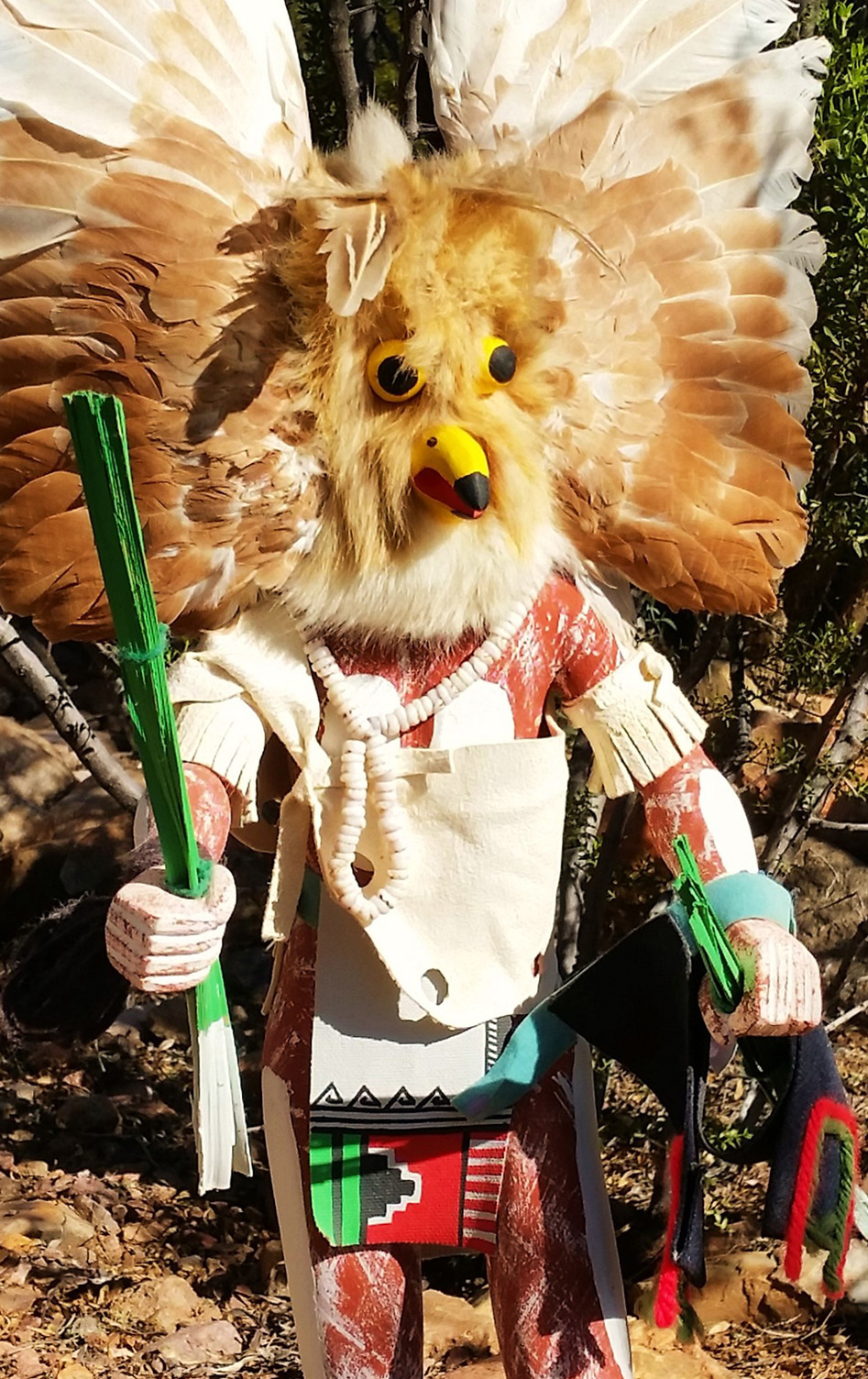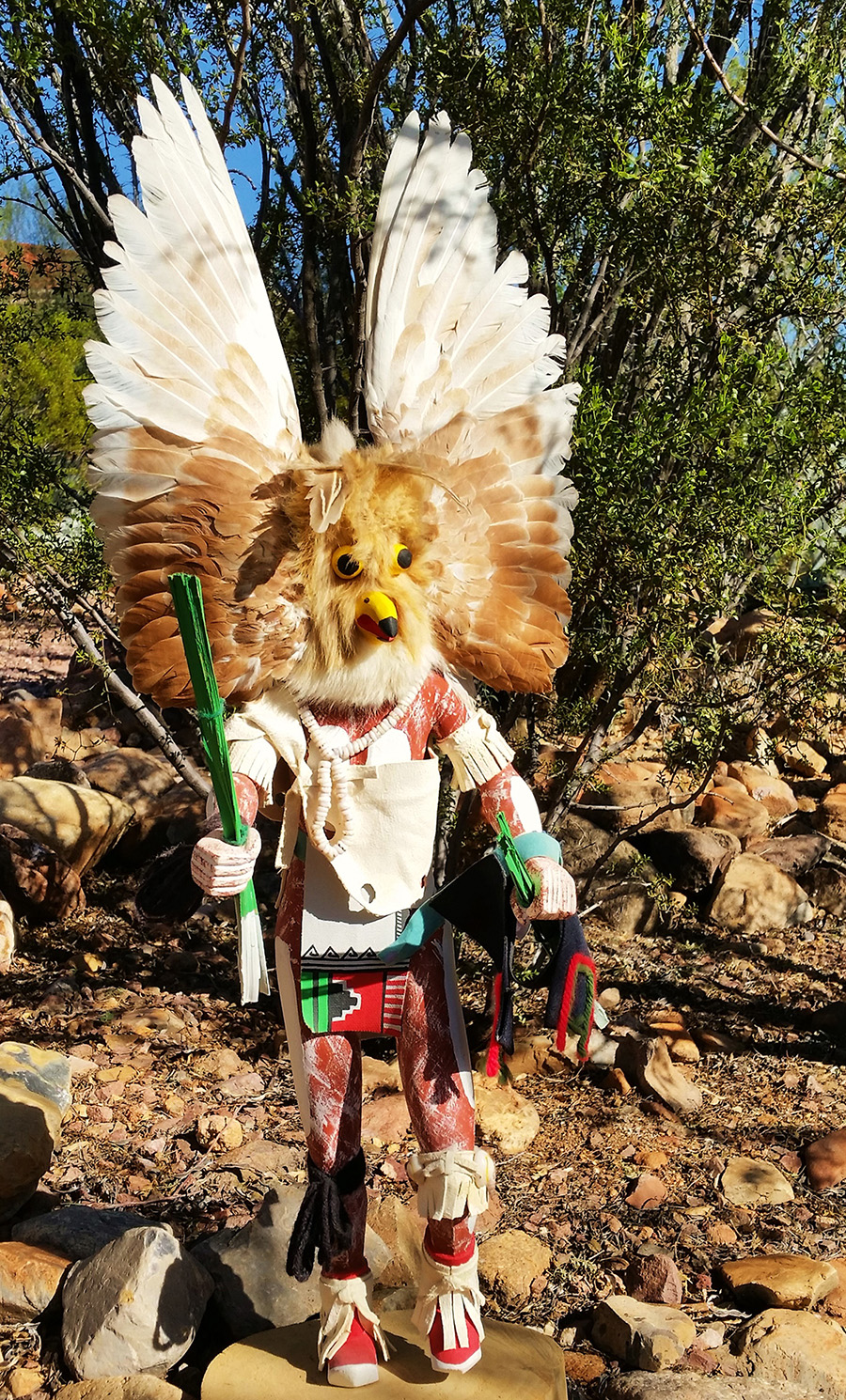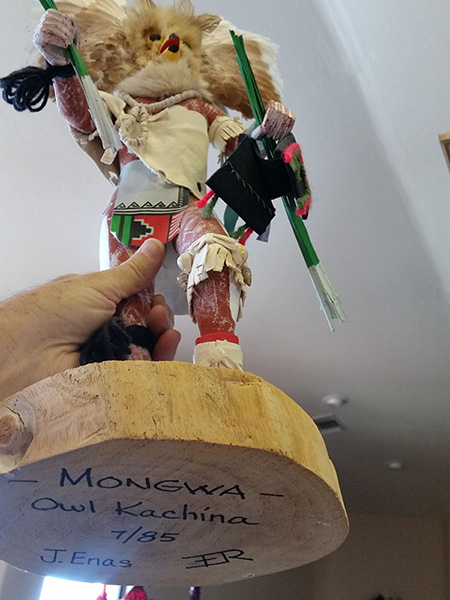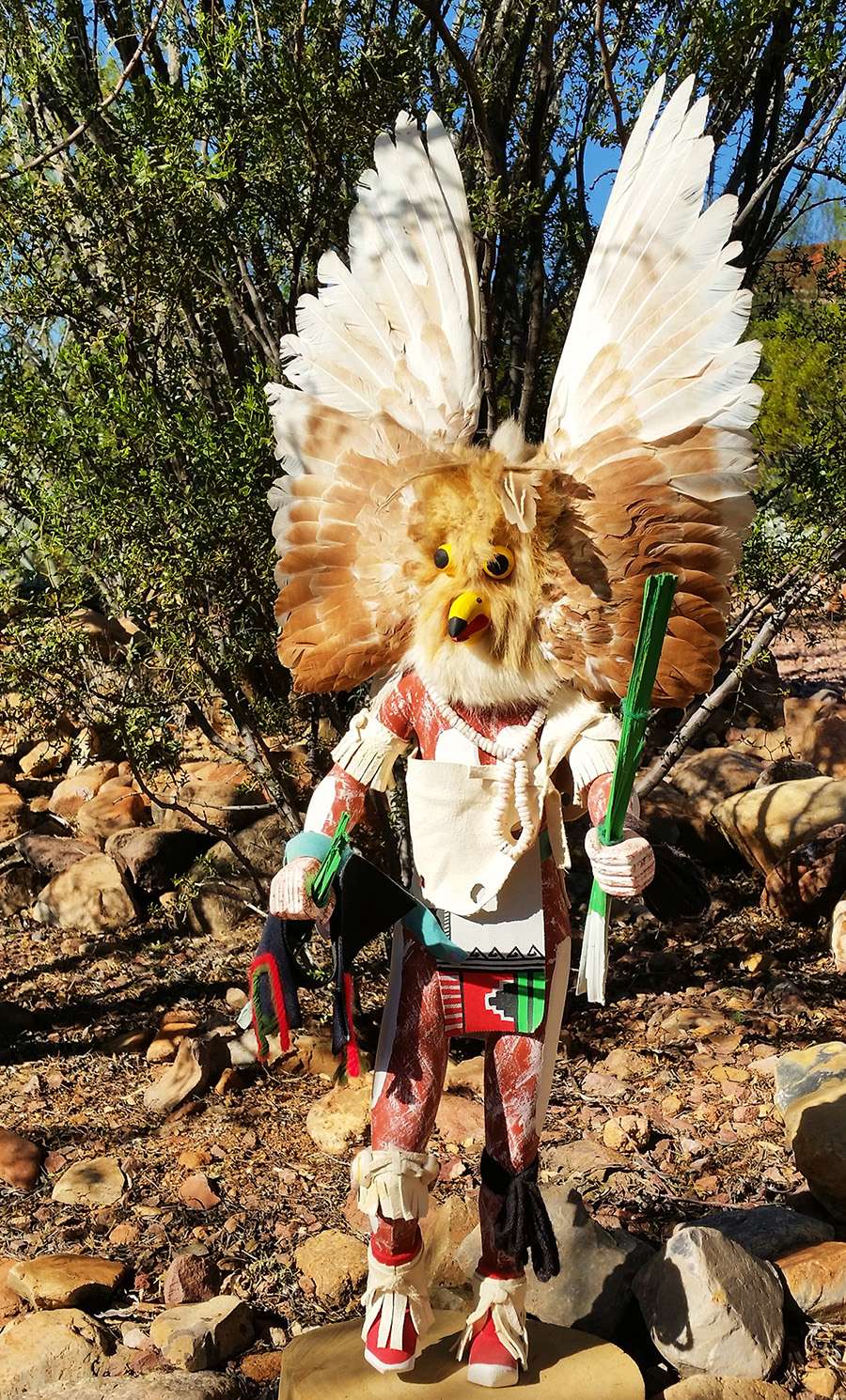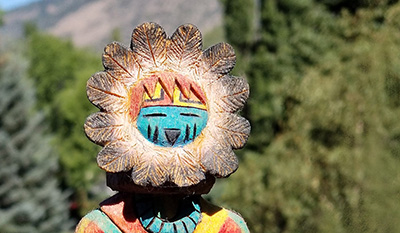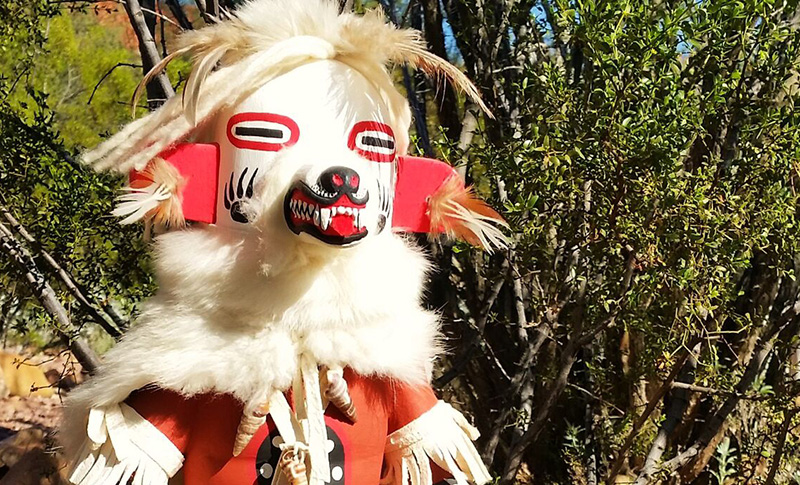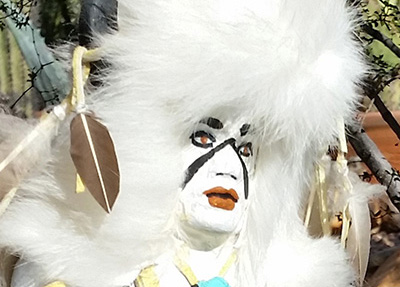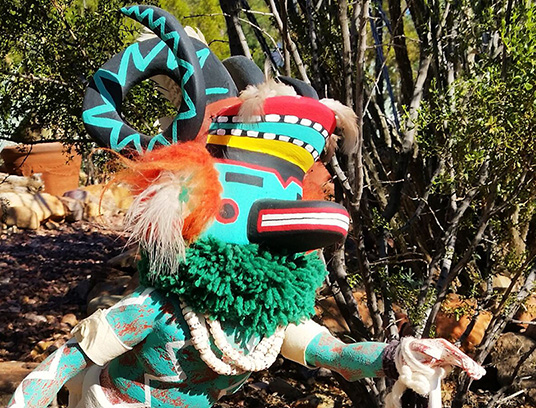Mongwa, the Great Horned Owl
symbolizes intelligence and wisdom. The Hopi feel the Mongwa kachina is very beneficial to agriculture keeping their fields free of rodents. Mongwa, the Great Horned Owl is also available at the village dances to knock sense into the kachina clowns.
This large Mongwa, Great Horned Owl Kachina, is one of many kachina carvings in the private collection. This MONGWA is in excellent shape with a striking rabbit skin, representing feathers, head piece with many large upright owl wings/feathers on each side, large yellow eyes, and a black tipped, yellow curved beak. As you take a closer look, you can see all the beautiful symbolic detail in the markings, ornamentation of feathers, leather, rabbit skin, necklace, shells and colorful yarn. Wearing a buckskin cape and painted in reddish brown with oval white spots, he wears the traditional kilt with green bands and symbols folded to form a breechclout and a wide blue belt, black yarn around his wrists and right knee along with fringe and shells on the left knee and fringed red moccasins. He carries a yucca whip.
Skillfully carved with forward body movement and bend of the arms, sharp focus of the head and bent legs as though the kachina was photographed dancing in mid-stride. Even with all the dynamic forward movement, the doll has perfect balance, standing on its own.
This kachina measures, including the base of some 2”, approximately 20” to the top of the head, and some 27” to the top of the feathers. There are no cracks or broken parts, simply excellent condition.
Great Horned Owl, Mongwa
Before you click to purchase, feel free to send us an email and questions about this beautiful kachina doll. Due to the unique task of shipping we can have that conversation, as well, and then proceed to check out.
Three Aspects of a Kachina
For the Hopi, a Kachina has three aspects; the supernatural being, the masked Hopi dancer and the dolls. Each Kachina has a purpose. The supernatural being is the spirit of the Hopi. The Hopi dancers wear the masks and decorations of the supernatural spirits in the Hopi Plaza. The dolls are the teaching tools made in the likeness of the dancers of the supernatural spirit.
Forces of Nature
Kachinas represent the forces of nature, human, animal, plant, and act as intermediaries between the world of humans and the gods. Kachinas play an important part in the seasonal ceremonies of the Hopi. They represent generations of traditions that have been passed on and are the subject of a number of books.
TIHU
Small kachina dolls, called tihu in Hopi, are given to children to introduce the child to what each of the kachinas look like. The dolls are carved representations of the katsinam, the spirits essences of their ancestors, animals, plants, nature, all that is within the Hopi universe.
Traditionally, kachina dolls are created by Hopi or Zuni artists, and sometimes by the Navajo.
You will see a variety of spellings for Kachina, also known as Katchinas, Katcinas, Katsinas, Kat’sina. Kachina is typically the English spelling, while Katsina is Hopi.
For more information on kachina dolls, as well as other Southwest Native Indian Art, visit Turquoise Spirit Journey.
View these Kachina Dolls here and in the
Turquoise Spirit Journey Private Collection
TAWA Sun Kachina
is accredited with the Earth’s creation and thereby highly revered by the Hopi. Tawa and Kokyanwuhti, the Earth Goddess, created the Earth.
HON White Bear
is powerful and thought to be capable to curing illness. Naturally, they are great warriors.
White Buffalo
may appear in January, winter dances, at Second Mesa, as a social dancer while representing the most sacred of all the animals.
PONG Mountain Ram
appears in the Hopi Plaza Dance as a group, as a herd of mountain rams, and typically dances with a cane.

